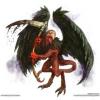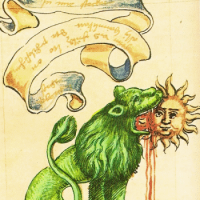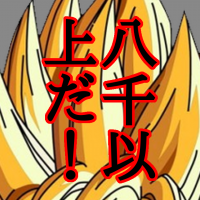訊息: 38
語言: English
WereVrock (顯示個人資料) 2015年7月5日下午5:51:02
mbalicki:Did I misunderstand him? He is basically saying that "c" is read as "ts". I am aware it is not the same as actually using the letters t and s but rather two sounds compressed into one
No, no, no! The letter „c” signifies only one sound /t͡s/ (affricate, ekfrota konsonanto), which is different from „ts” which would be pronounced as /ts/ (stop + fricative, halta + frota konsonantoj).
I could find the exact question Zamenhof was asked but the answer is rather clear:
LR 71 C (1910), PVZ IX, p. 135:Via opinio pri „c”, „ĉ”, „ĝ” estas erara; estas vero, kelkaj nacioj elparolas ilin kiel „ts”, „tŝ”, „dĵ” — sed ne ĉiuj nacioj tion faras.
Breto (顯示個人資料) 2015年7月5日下午6:58:34
WereVrock:If I'm reading it right, he actually says: "Your opinion regarding "c", "ĉ", "ĝ" is erroneous; it's true, a few nations pronounce them as "ts", "tŝ", "dĵ" - but not all nations do that."mbalicki:Did I misunderstand him? He is basically saying that "c" is read as "ts". I am aware it is not the same as actually using the letters t and s but rather two sounds compressed into one
No, no, no! The letter „c” signifies only one sound /t͡s/ (affricate, ekfrota konsonanto), which is different from „ts” which would be pronounced as /ts/ (stop + fricative, halta + frota konsonantoj).
I could find the exact question Zamenhof was asked but the answer is rather clear:
LR 71 C (1910), PVZ IX, p. 135:Via opinio pri „c”, „ĉ”, „ĝ” estas erara; estas vero, kelkaj nacioj elparolas ilin kiel „ts”, „tŝ”, „dĵ” — sed ne ĉiuj nacioj tion faras.
orthohawk (顯示個人資料) 2015年7月5日下午7:11:03
WereVrock:The problem is when people use an alphabet/spelling system that does not have a separate letter for the affricate sound. There are 3 sounds in the English word "cats": , ⟨æ⟩ and ⟨t͡s] the problem is that we spell the last sound with two letters but it's actually only one sound, phonetically. Now in English that phoneme might be just a t and an s together but in languages like Italian, where "t" is a dental consonant (the tongue tip touches the back of the upper teeth) and the "zz" in "piazza" the sound is alveolar (the tongue tip touches the ridge of gum behind the teeth) it is very clearly a different sounds entirely. But, as Lee Miller says earlier in this thread, for all practical purposes, whether you believe it to be a single sound or just a combination of t and s, the result is the same: "c"mbalicki:Did I misunderstand him? He is basically saying that "c" is read as "ts". I am aware it is not the same as actually using the letters t and s but rather two sounds compressed into one
No, no, no! The letter „c” signifies only one sound /t͡s/ (affricate, ekfrota konsonanto), which is different from „ts” which would be pronounced as /ts/ (stop + fricative, halta + frota konsonantoj).
I could find the exact question Zamenhof was asked but the answer is rather clear:
LR 71 C (1910), PVZ IX, p. 135:Via opinio pri „c”, „ĉ”, „ĝ” estas erara; estas vero, kelkaj nacioj elparolas ilin kiel „ts”, „tŝ”, „dĵ” — sed ne ĉiuj nacioj tion faras.
mbalicki (顯示個人資料) 2015年7月5日下午7:24:07
WereVrock:Did I misunderstand him?Check out Breto's translation above, as he captured the meaning correctly.

WereVrock:I am aware it is not the same as actually using the letters t and s but rather two sounds compressed into oneIt is not only using different writing: „c” and „ts” represent two different pronunciations. It's true, that phonetically similar things happen in your mouth when your pronouncing these two, however I would go as far as calling it compressing two sounds into one.
I see you speak Turkish and English, am I right? So do you think that English “tsh” would be the same as “ch”?, or that Turkish “tş” would be the same as “ç”? Do you think that Turkish “dj” would be the same as “c” in “patlıcan”?
There's no proper “c” /t͡s/ sound in English, nor in Turkish and so I understand that it's pronunciation can be difficult for you.
 Pronouncing it as “ts” /ts/ is a pretty good approximation for a beginner, but remember that you aim to pronounce it as a one sound /t͡s/ someday.
Pronouncing it as “ts” /ts/ is a pretty good approximation for a beginner, but remember that you aim to pronounce it as a one sound /t͡s/ someday. nornen (顯示個人資料) 2015年7月5日下午7:34:39
While pronouncing /ts/ you press the tip of your tongue against your alveolar ridge or the back of the teeth (depeding on whether you pronounce /t/ as English alveolar [t] or maybe as Italian dental [t̪]). By doing so, you prevent all airflow and then you let your tongue go and the plosive sound comes out. After having completely released the tongue, you move your tongue again closer to the alveolar ridge in order to produce the /s/. So in this case we have: no airflow -> a lot of airflow -> limited airflow. Or watching the movement of the tongue: top -> bottom -> almost top
With /t͡s/ the /s/ is the release of the plosive. I.e., you don't release and produce then the /s/, but you just release a little bit, so that the /s/ comes out immediately. So in this case we have: no airflow -> limited airflow. Or watching the movement of the tongue: top -> almost top
WereVrock (顯示個人資料) 2015年7月5日下午8:50:13
If I'm reading it right, he actually says: "Your opinion regarding "c", "ĉ", "ĝ" is erroneous; it's true, a few nations pronounce them as "ts", "tŝ", "dĵ" - but not all nations do that."I would have translated it the same. I still fail to see how this contrasts what I'm saying.
Turkish “tş” would be the same as “ç”?In Turkish, "tş" wouldn't be compressed into one sound as ç. Btw: j never comes after d in Turkish.
I've seen a linguist say that the sound "th" in English is actually the combination of "t" and "h" and ĉ is combination of "t" and "ŝ". He didn't mean that we can just say a "t" then an "h" instead of "th" or a "t" and a "ŝ" instead of "ĉ". He didn't give lots of details. Maybe I get it all wrong. So when I said that c is actually 2 sounds compressed into a single sound I was talking about c being something like this. I did't think that "scias" and "stsias" would be pronounced exactly the same.
When Evildea pronounces it I'm only hearing "sias" or maybe a "cias" but never a "scias". I couldn't have recognize the word without the subtitles.
With /t͡s/ the /s/ is the release of the plosive. I.e., you don't release and produce then the /s/, but you just release a little bit, so that the /s/ comes out immediately. So in this case we have: no airflow -> limited airflow. Or watching the movement of the tongue: top -> almost topOk. I've got it. Now can you describe how would we pronounce "sc"?
Breto (顯示個人資料) 2015年7月5日下午9:15:57
WereVrock:I may have misunderstood you then. I don't know the context of your quote, so I'm not sure what opinion is being referred to.If I'm reading it right, he actually says: "Your opinion regarding "c", "ĉ", "ĝ" is erroneous; it's true, a few nations pronounce them as "ts", "tŝ", "dĵ" - but not all nations do that."I would have translated it the same. I still fail to see how this contrasts what I'm saying.
WereVrock:I've seen a linguist say that the sound "th" in English is actually the combination of "t" and "h" and ĉ is combination of "t" and "ŝ". He didn't mean that we can just say a "t" then an "h" instead of "th" or a "t" and a "ŝ" instead of "ĉ". He didn't give lots of details. Maybe I get it all wrong. So when I said that c is actually 2 sounds compressed into a single sound I was talking about c being something like this. I did't think that "scias" and "stsias" would be pronounced exactly the same.Apart from compound words like "outhouse" which sound literally as "t" + "h", I can't think of any way that the English "th" is a combination of "t" and "h" that isn't unnecessarily complicated. It is a fricative like "h", sure, but that could also be said of "s" or "f". It is pronounced in almost the same part of the mouth as "t", but more dental...really "s" is closer to the position of "t" than "th" is. For most English speakers that I know, if you show them how "ch" (Esperanto "ĉ" ) is basically identical to "t" + "sh" (Esperanto "t" + "ŝ" ), it is an amazing revelation, because without putting extra thought into it, a native speaker hears these as completely separate, unique sounds more often than not. When it comes to Esperanto "c" versus "ts", I've always understood "c" to be almost the same as "ts", but without a full separation between t and s, almost as though they are slurred together.
When Evildea pronounces it I'm only hearing "sias" or maybe a "cias" but never a "scias". I couldn't have recognize the word without the subtitles.
As for scias, that "sc" combination is very difficult for me, and even when I make a special effort to make sure I can feel myself making each separate sound there, I can't usually actually hear it, and I suspect that it often sounds like "sias" or "cias" despite my best efforts. The best I ever manage is to move the initial "s" to the end of the previous word, and then continue with "cias"; without that, I always have an awkward hesitation at the beginning of that word.
On a completely unrelated note: "WereVrock"...now that's a cool name. I like it.

mbalicki (顯示個人資料) 2015年7月5日下午9:18:05
WereVrock:You begin with your tongue formimg a gap between itself and somewhere near the superior alveolar ridge, and by breathing air from your lungs you produce familiar sibilant consonant (/s/). Then, still blowing air from the lungs, you move your tongue (doesn't really matter whether with the tip or with the blade of the tongue) closer to the top of your mouth (doesn't really matter whether to the upper teeth or the upper gums), eventually interrupting the airflow for a brief moment, just to restore it once again (/t͡s/) but in such manner, that all the time the sound is hissing (/st͡s/, by the sulcalisation); if the high frequency sibilance would be broken that may result in sounding like /sts/. Remember also that the time of each sound should roughly be the same, so do not prolong the latter sound because it may sound like /st͡ss ~ st͡sː/.nornen:With /t͡s/ the /s/ is the release of the plosive. I.e., you don't release and produce then the /s/, but you just release a little bit, so that the /s/ comes out immediately. So in this case we have: no airflow -> limited airflow. Or watching the movement of the tongue: top -> almost topOk. I've got it. Now can you describe how would we pronounce "sc"?
WereVrock (顯示個人資料) 2015年7月5日下午9:55:24
mbalicki:You begin with your tongue formimg a gap between itself and somewhere near the superior alveolar ridge, and by breathing air from your lungs you produce familiar sibilant consonant (/s/). Then, still blowing air from the lungs, you move your tongue (doesn't really matter whether with the tip or with the blade of the tongue) closer to the top of your mouth (doesn't really matter whether to the upper teeth or the upper gums), eventually interrupting the airflow for a brief moment, just to restore it once again (/t͡s/) but in such manner, that all the time the sound is hissing (/st͡s/, by the sulcalisation); if the high frequency sibilance would be broken that may result in sounding like /sts/. Remember also that the time of each sound should roughly be the same, so do not prolong the latter sound because it may sound like /st͡ss ~ st͡sː/.Thanks. I will need to work on it.
Breto:I may have misunderstood you then. I don't know the context of your quote, so I'm not sure what opinion is being referred to.Even though I've quoted you for the translation, I was talking to mbalicki since he is the one who quoted Zamenhof. It doesn't matter anymore.
Breto:On a completely unrelated note: "WereVrock"...now that's a cool name. I like it.Thanks

orthohawk (顯示個人資料) 2015年7月5日下午10:11:34
mbalicki:Not in English, and I don't think it's true in Esperanto, either. but even if it is (In esperanto) does it really matter in most cases? No.
It is not only using different writing: „c” and „ts” represent two different pronunciations.
mbalicki:There's no proper “c” /t͡s/ sound in English,Yes, there is. It appears at the end of the plural form of all nouns ending in a "t".



